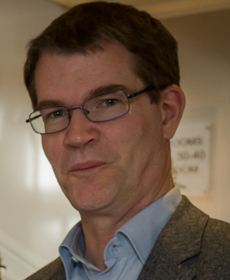A word from the EP Deputy Department Head - October 2025

It is my pleasure to introduce this latest issue of the EP newsletter, full of fascinating articles drawn from the breadth of activities going on in the CERN EP department and beyond. As the weather turns colder and we begin to look towards the end of the year, I hope you will find some time to read and learn more about the latest scientific developments and the technologies that support them.
As I write, the LHC and its experiments are on track for another bumper harvest of data from this year’s proton run, to be complemented with heavy-ion collisions in the last weeks of data-taking. However, in early summer, the LHC took a week out to deliver proton-oxygen, oxygen-oxygen and neon-neon collisions. As you can read in this issue, impressively fast analyses from the LHC experiments have already opened up new perspectives on nuclear structure and the quark-gluon plasma. The Run-2 data samples continue to yield fresh results, such as the first observation of CP-violation in baryon decays at LHCb, further insights into the behavior of top quark pairs close to the production threshold from ATLAS, and constraints on supersymmetry through the ‘razor boost’ technique used at CMS. Turning back to Run-3, CMS has explored a novel application of the ‘level 1 scouting’ technique to look for slowly-moving particles whose signatures span many LHC bunch crossings, and an article from LHCb describes two additional physics studies enabled by the SMOG2 gas storage cell.
Away from the big four LHC experiments, you can read about ISOLDE’s voyage towards the ‘island of inversion’ on the nuclear chart, and how the BASE experiment at AD/ELENA manipulates single antiprotons to make ever-more- precise measurements of their fundamental properties. An interview with Marek Gazdzicki reflects on four decades of strong interaction physics at the SPS, and Juan Rojo reviews the progress in neutrino physics made possible by the LHC’s forward experiments FASER and SND@LHC.
Looking towards the HL-LHC, you can read about the progress towards the new High Granularity Timing Detector for the ATLAS phase-2 upgrade, and how CMS is preparing its infrastructure to host the expanded computer farm needed to process the ever-increasing data rates. A further article describes the RICH detector planned for particle identification in the ALICE3 proposal, and the development of the associated silicon photomultipliers. Analysing the wealth of data from HL-LHC will require matching simulation samples, and work in EP-SFT to speed up calorimeter simulation will play an important part in making this feasible.
Once again, there is a wealth of information to discover in this issue of the EP newsletter, and I wish you happy reading.
